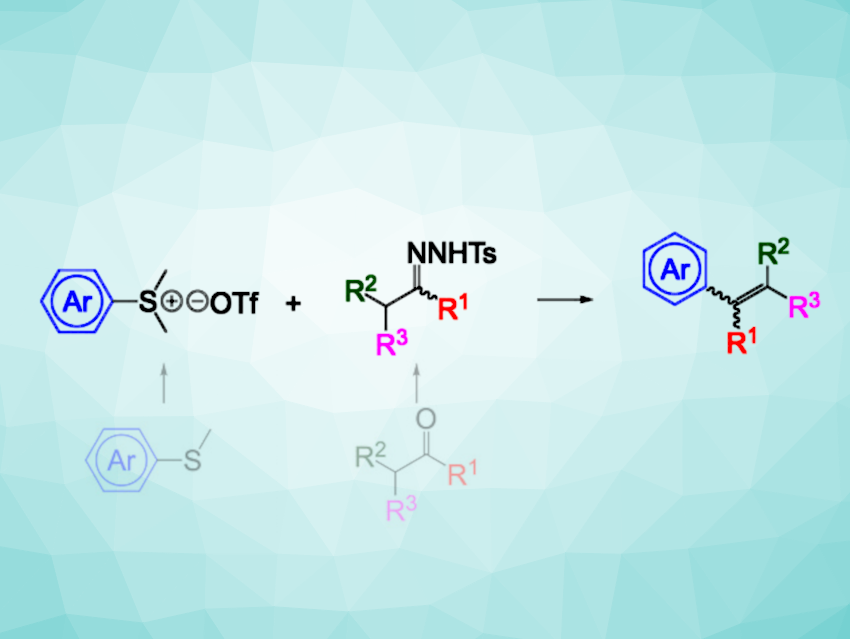Aggregation-induced emission (AIE) molecules are important in fields such as chemical sensing, bioimaging, and optoelectronics. Polysubstituted olefin-based AIE molecules, for example, are useful due to their luminescent properties, which can be precisely tuned by modulating the molecular structure. However, traditional synthetic methods for the synthesis of polysubstituted olefins can suffer from low reactivity, poor chemical selectivity, and a need for harsh reaction conditions, hampering the development of these materials. Therefore, new methods for the efficient and environmentally friendly synthesis of such AIE molecules under mild conditions would be useful.
Qinqin Shi, Hui Huang, University of the Chinese Academy of Sciences, Beijing, China, Kaikai Wen, University of the Chinese Academy of Sciences and Beijing Institute of Nanoenergy and Nanosystems, and colleagues have developed a cross-coupling reaction based on carbon-sulfur (C−S) bond activation for the synthesis of AIEgens, using aryl sulfonium triflates and tosylhydrazones as easily accessible reactants (general reaction pictured). The aryl sulfonium triflates and tosylhydrazones can be obtained from easily available thioethers and ketones, respectively. The researchers used the commercially available palladium catalyst XPhos Pd G3 together with LiOtBu as a base to perform the reactions in toluene at 110 °C.
The team demonstrated the generality of the method by preparing over 40 examples of polysubstituted olefins. The emission spectrum range (350–850 nm) of the resulting AIE molecules can be tuned by changing the substituents on the substrates. As an example, the team prepared nanoparticles using an AIE molecule with a fluorescence quantum yield of up to 65.8 %. They found that these nanoparticles exhibit excellent cellular localization capabilities and biocompatibility, indicating potential applications in the biomedical field. Overall, the team developed a cost-effective and efficient method for synthesizing AIE molecules that enables control of the optical properties of the products.
- General method to synthesize aggregation‐induced emission molecules via carbon‐sulfur bond activation,
Bowei Ma, Xinyu Liang, Gu Xu, Guanghao Zhang, Lutang Zhao, Liangzhuo Ma, Wenbin Xie, Xiang Li, Qinqin Shi, Kaikai Wen, Hui Huang,
Aggregate 2024.
https://doi.org/10.1002/agt2.650




